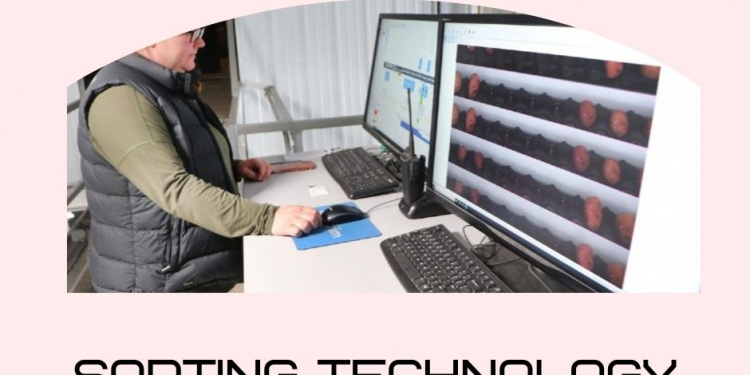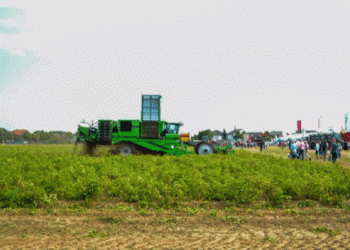A fourth-generation potato farming and marketing family in North Dakota is leaping into a new era of electronic potato grading.
As AgWeek’s Mikkel Pates reports, the Hall family partnership of Hoople in northeast North Dakota on Oct. 25, 2021 put in place a multi-million-dollar optical grading system that uses cameras to evaluate potatoes individually and sort them into lanes. The Halls’ Spectrim can sort up to 1,700 potatoes a minute or around 120,000 per hour.
The new Spectrim sorter from Compac Sorting Equipment puts potatoes in line on a carrier that takes potatoes in four single-file lanes through what they call a camera cabinet. The potatoes are rotated 360 degrees and eyed by nine cameras, producing 25 pictures with 80 versions, based on types of light.
“Not only does it see the color — reds, greens and blacks that you and I see — but it also has infrared cameras,” partner Jackson Hall explains. “We can see underneath the skin if there’s maybe rot under the skin that might be hard for human eyes to see, and the cameras can pick it up and kick it out.”
The cameras can see any “pressure bruising” which is from storage and settling in the pile. “We basically had to teach the machine what’s red on a red potato, what’s yellow on a yellow potato, what’s green, what’s rot,” Jackson Hall said. “Once it starts learning, it learns quick and does a good job.”








